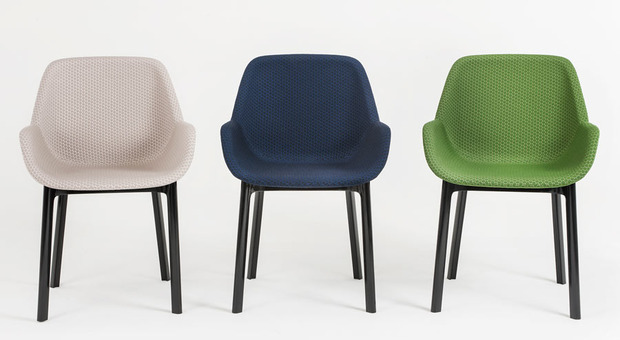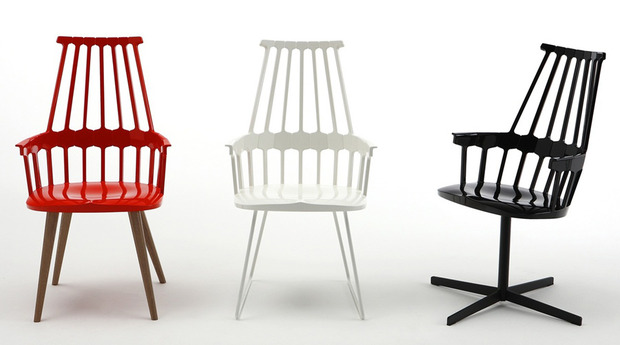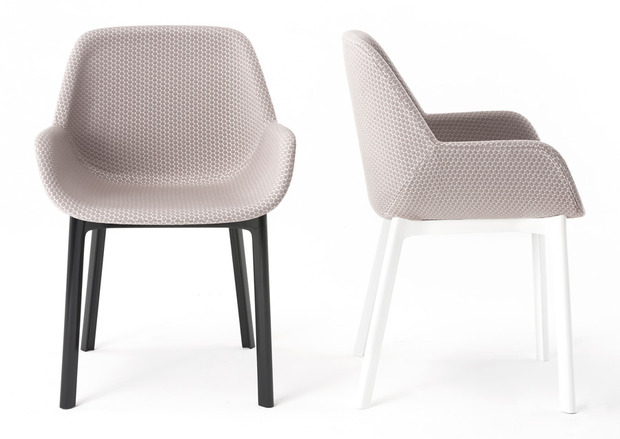Interview: Patricia Urquiola
We speak with the Spanish designer about briefs, color and the contract space


In the 25 years since taking the reins at Kartell, owner and CEO Claudio Luti has collaborated with nearly every industrial designer of note, transforming the over 60-year-old company into the king of polycarbonate furniture and a darling of Italian design. This year Kartell proved their prowess again in Milan, taking center stage at the Saloni. On display alongside works by other contemporary legends, such as Nendo, stood Clap, a new chair by Spanish designer Patricia Urquiola. More recognizable than her name pronounceable, Urquiola’s signature design is characterized by unique form and bright color, as seen through a youthful lens.
While projects of years past may have seen more innovation in form, Clap’s simplicity stems from its ultimate use, a chair for contract. Curious about the confines this sort of collaboration may incur, we caught up with Urquiola to talk about briefings, color and designing furniture to be used in public spaces.

What does “contract” mean to you?
For me contract is something about more than office. You know, for me the office is already in many circumstances connected to simplicity. And contract is something in any public space. All the places we share, all we have together. And it can be in a restaurant, it can be many places. Like here [at Saloni], for example. But it’s not in our home.
When working with Kartell, does the project come from a briefing or from a creative need?
For me, Comeback was a need I had. That was not Luti’s need. And he had to listen to me, because I insisted I wanted this kind of typology for Kartell. I wanted a chair in plastic with plenty of nostalgia, but done with a new attitude. You see the chair, it’s a bit heavy, but I wanted it heavy. I wanted it [this way] because you have all those chairs, all so light and plastic.

It’s important in this case, I think. For Kartell, everything was taking such a light attitude, and I needed something with another attitude—messing with wood and metal, and part plastic. I had to convince them. And that was my briefing, a personal briefing. Then I listened to Luti’s briefing that he needed a chair for contract, something very basic and very severe.
Which brings us to your new design, the Clap chair, which is rather modest in form compared to designs you’ve done for Kartell in the past.
I think Luti is still thinking the company needs other languages. And I’m trying to find new ways with him. It’s very basic for Kartell. We wanted it very basic and simplified—the upholstery, and the classic legs. And the more we did this I saw we could do something simple and for comfort.

How do you approach the use of color?
We can play with it, I’m open to that. I think the color, me… I don’t have chromophobia. When a project needs it, and when it is okay, we use it. It’s an element of the project when you need it. And when the project doesn’t need it we don’t use it at all.

The Clap chair will be made in many colors. Why did this project “need it?”
We were thinking that this kind of product has to have a long life, in different residences. Sometimes it’s not the right thing, but a chair [like Clap] is of another kind of personality. We wanted to do it with opaque legs. We are going to do it in pink, a very clear, blue—colors that are pastel. We’re going to do a part two. This is the beginning. This is the first attack. The first attack, and then in a short time we’ll introduce everything else.
Portrait by Graham Hiemstra, all others courtesy of Kartell












